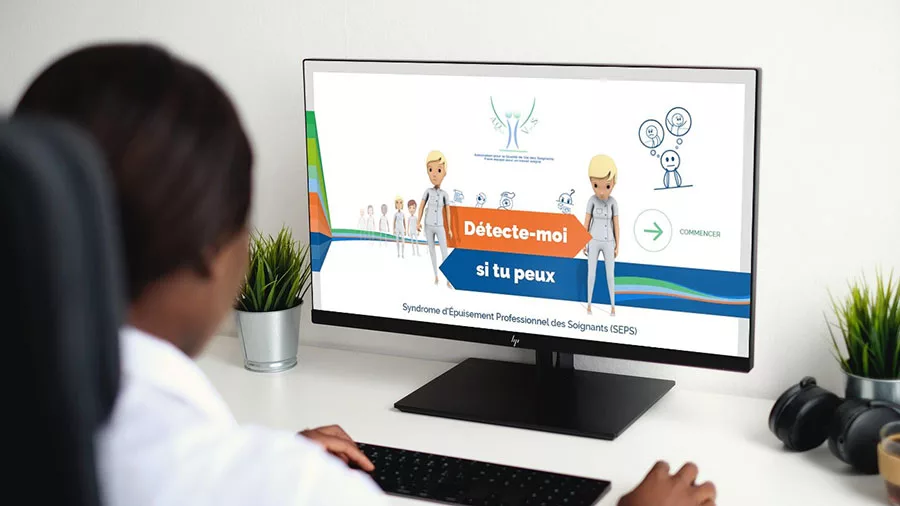Extremely solicited to deal with the COVID-19 pandemic, the mental health of healthcare professionals is being severely tested. This exceptional crisis situation, coupled with an already stressful workload, has greatly increased the risks of burnout (Healthcare Professional Burnout Syndrome – SEPS).
At the initiative and under the scientific supervision of A.Qua.VieS (Association for Healthcare Professionals’ Quality of Life), Audace Digital Learning has developed a serious game that is currently being commercialized. This game enables healthcare professionals and their supervisors to recognize and better anticipate burnout.
Burnout or SEPS is characterized by feelings of intense fatigue, loss of control, and an inability to achieve concrete results at work. In early 2020, the National Public Health Agency (ANSP) entrusted the A.Qua.VieS association with the mission of assessing the risk of burnout in hospital settings. The association has chosen the serious game “Detect Me If You Can!” developed by Audace Digital Learning, which addresses the challenges of the Observatory for the Quality of Work Life of healthcare professionals.
Between the theoretical and practical components, this online training enables healthcare professionals and their supervisors to acquire sufficient knowledge about healthcare professional burnout (or burnout syndrome) in order to better prevent it.
Objectives
- To be able to define the causes of healthcare professional burnout (SEPS).
- To be able to identify a person suffering from healthcare professional burnout (SEPS).
- To be able to apply one’s knowledge in the context of case studies related to healthcare professional burnout (SEPS).
- To be able to modify one’s organization to prevent cases of healthcare professional burnout (SEPS).
- To be able to self-assess one’s knowledge and practices with the aim of operational implementation in one’s healthcare facility.
Content
Chapter 1: Introduction (context, definition of SEPS, some statistics)
Chapter 2: Recognizing SEPS
Chapter 3: Causes of SEPS
Chapter 4: Managing SEPS
Chapter 5: Preventing SEPS
Chapter 6 (designed for managers): Proximity Management (collective and institutional prevention, project approach, training, meeting spaces)
Chapter 7: Conclusion (summary, resources)

